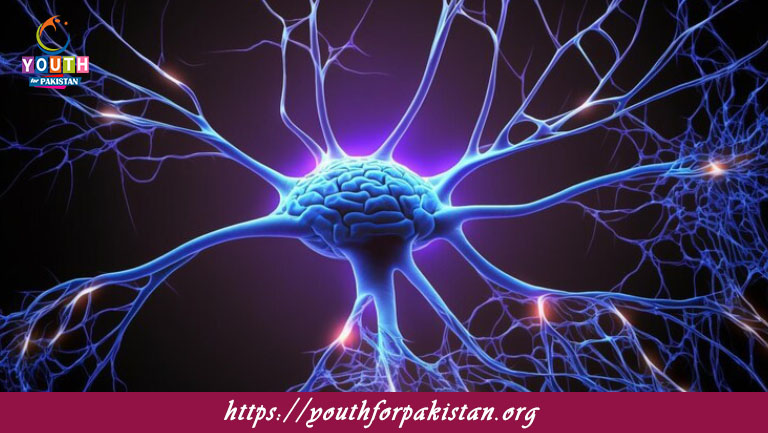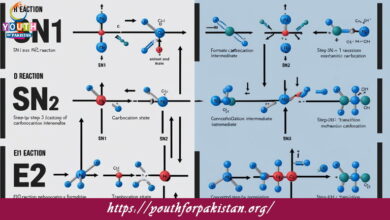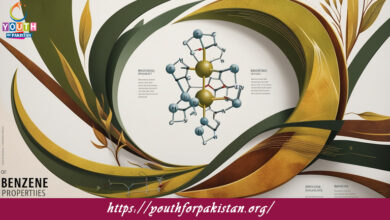Neurons MDCAT MCQs with Answers

Welcome to the Neurons MDCAT MCQs with Answers. In this post, we have shared Neurons Multiple Choice Questions and Answers for PMC MDCAT 2024. Each question in MDCAT Biology offers a chance to enhance your knowledge regarding Neurons MCQs in this MDCAT Online Test.
The basic structural and functional unit of the nervous system is the:
a) Neuron
b) Glial cell
c) Synapse
d) Axon
The part of the neuron that receives signals from other neurons is called the:
a) Axon
b) Dendrite
c) Soma
d) Myelin sheath
Which part of the neuron conducts electrical impulses away from the cell body?
a) Dendrite
b) Axon
c) Soma
d) Synapse
The myelin sheath surrounding the axon is primarily composed of:
a) Proteins
b) Carbohydrates
c) Lipids
d) Nucleic acids
Which type of neuron carries signals from sensory receptors to the central nervous system?
a) Motor neurons
b) Interneurons
c) Sensory neurons
d) Efferent neurons
Neurons that transmit signals from the central nervous system to muscles and glands are known as:
a) Sensory neurons
b) Motor neurons
c) Interneurons
d) Glial cells
The primary function of glial cells is to:
a) Transmit electrical impulses
b) Provide structural and nutritional support to neurons
c) Form synaptic connections
d) Release neurotransmitters
The junction between two neurons where neurotransmitters are released is called the:
a) Soma
b) Axon terminal
c) Synapse
d) Dendritic spine
Which part of the neuron contains the nucleus and other organelles?
a) Axon
b) Dendrite
c) Soma
d) Myelin sheath
The nodes of Ranvier are found along the:
a) Dendrites
b) Soma
c) Axon
d) Synaptic cleft
The action potential is propagated along the axon due to the opening and closing of:
a) Calcium channels
b) Sodium and potassium channels
c) Chloride channels
d) Acetylcholine receptors
Which type of neuron is responsible for processing and interpreting sensory information within the central nervous system?
a) Sensory neurons
b) Motor neurons
c) Interneurons
d) Efferent neurons
The region of the neuron that generates action potentials is the:
a) Dendrite
b) Soma
c) Axon hillock
d) Axon terminal
Neurons that release neurotransmitters into the synaptic cleft are known as:
a) Postsynaptic neurons
b) Presynaptic neurons
c) Sensory neurons
d) Interneurons
Which type of neuron would you expect to find in the spinal cord?
a) Sensory neurons
b) Motor neurons
c) Interneurons
d) Efferent neurons
The primary role of the axon terminal is to:
a) Receive signals from other neurons
b) Generate action potentials
c) Release neurotransmitters into the synaptic cleft
d) Support the neuron’s structure
The part of the neuron that conducts electrical impulses toward the cell body is called the:
a) Axon
b) Dendrite
c) Soma
d) Node of Ranvier
Which of the following is not a type of glial cell?
a) Astrocyte
b) Oligodendrocyte
c) Microglia
d) Motor neuron
The role of myelin in the nervous system is to:
a) Decrease the speed of action potential transmission
b) Increase the speed of action potential transmission
c) Produce neurotransmitters
d) Support neuron growth
The myelin sheath in the peripheral nervous system is produced by:
a) Oligodendrocytes
b) Schwann cells
c) Astrocytes
d) Microglia
The term for the gap between two neurons is called the:
a) Synaptic cleft
b) Axon hillock
c) Node of Ranvier
d) Dendritic spine
Which of the following structures is involved in transmitting electrical impulses away from the neuron’s cell body?
a) Dendrite
b) Axon
c) Soma
d) Synaptic cleft
Neurons that have one axon and multiple dendrites are called:
a) Unipolar neurons
b) Bipolar neurons
c) Multipolar neurons
d) Pseudounipolar neurons
The primary function of the axon is to:
a) Receive signals from other neurons
b) Conduct electrical impulses away from the cell body
c) Support the neuron’s structure
d) Release neurotransmitters
Neurons are classified based on their:
a) Function
b) Location
c) Shape
d) Size
The neuron type primarily involved in the sensory pathway is the:
a) Motor neuron
b) Interneuron
c) Sensory neuron
d) Efferent neuron
The process of generating an action potential involves:
a) Hyperpolarization of the neuron
b) Depolarization of the neuron
c) Reuptake of neurotransmitters
d) Release of neurotransmitters
Which type of neuron is involved in the integration of sensory information and coordination of motor responses?
a) Sensory neurons
b) Motor neurons
c) Interneurons
d) Efferent neurons
The primary function of dendrites is to:
a) Generate action potentials
b) Release neurotransmitters
c) Receive signals from other neurons
d) Conduct impulses to muscles
Which part of the neuron is responsible for the transmission of action potentials?
a) Dendrite
b) Soma
c) Axon
d) Axon terminal
The process of neurotransmitter release from the presynaptic neuron is known as:
a) Endocytosis
b) Exocytosis
c) Diffusion
d) Osmosis
Which glial cell type is responsible for forming the myelin sheath in the central nervous system?
a) Schwann cells
b) Oligodendrocytes
c) Astrocytes
d) Microglia
The neurotransmitters are stored in:
a) Dendrites
b) Axon terminals
c) Nucleus
d) Soma
Which structure is responsible for insulating the axon and speeding up the action potential transmission?
a) Dendrite
b) Myelin sheath
c) Synaptic cleft
d) Axon hillock
The electrical impulse that travels along the axon is known as an:
a) Action potential
b) Resting potential
c) Graded potential
d) Synaptic potential
Which type of neuron has only one axon and no dendrites?
a) Unipolar neuron
b) Bipolar neuron
c) Multipolar neuron
d) Pseudounipolar neuron
The nodes of Ranvier are crucial for:
a) Increasing action potential speed
b) Decreasing action potential speed
c) Maintaining resting potential
d) Generating graded potentials
The release of neurotransmitters into the synaptic cleft is triggered by:
a) Sodium influx
b) Potassium influx
c) Calcium influx
d) Chloride influx
The action potential travels along the axon in a:
a) Continuous wave
b) Saltatory conduction
c) Electrical gradient
d) Chemical gradient
The process by which neurotransmitters are taken back into the presynaptic neuron is called:
a) Reuptake
b) Degradation
c) Exocytosis
d) Endocytosis
Which of the following structures is not part of a typical neuron?
a) Dendrite
b) Axon
c) Synaptic cleft
d) Soma
The part of the neuron where action potentials are generated is the:
a) Dendrite
b) Axon
c) Soma
d) Axon hillock
Neurons are classified based on the number of:
a) Axons
b) Dendrites
c) Nuclei
d) Synapses
The role of the axon hillock is to:
a) Store neurotransmitters
b) Generate action potentials
c) Release neurotransmitters
d) Support the neuron’s structure
Which cell type is involved in the maintenance and repair of the nervous system?
a) Neurons
b) Glial cells
c) Muscle cells
d) Epithelial cells
The synaptic terminal of a neuron contains:
a) Neurotransmitters
b) Nucleus
c) Mitochondria
d) Ribosomes
Neurotransmitter release occurs at the:
a) Axon terminal
b) Dendritic spine
c) Soma
d) Myelin sheath
If you are interested to enhance your knowledge regarding Physics, Chemistry, Computer, and Biology please click on the link of each category, you will be redirected to dedicated website for each category.





